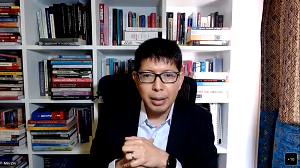On 28 September 2022, the Vivekananda International Foundation organised a discussion on “Myanmar’s Relations with Its Neighbouring Countries”. Dr Arvind Gupta, Director, VIF gave the introductory remarks. Myanmar has experienced a fundamental seismic shift. The prospect of a return to normalcy as before is no more there and the new normal is in an evolving stage. The discussion highlighted the characteristics of this post-normal Myanmar.
First, there exists an existential threat to Tatmadaw, regarding its legitimacy, credibility, and centrality. Many soldiers and high-rank officials are defecting since the past year. Second, there is an increasing militarisation of society. Especially with the rise of information technology, the conflicts and arms race has increased. Third, the economic and humanitarian crises are increasing leading to spillover effects. Fourth, there are complex drivers of conflict with increasing intra-ethnic conflicts. Finally, geopolitical complications are on the rise leading to further complications.
Against this backdrop, two scenarios can be predicted. In the first case, there is a baseline scenario, where the military will push for its own roadmap and conduct the elections in 2023. In the second case, we predict a worst-case scenario, in which the military rule would continue and there would be a state of low-intensity anarchy.
In these circumstances, there are a few common challenges for neighbouring countries. The massive migration and spillover effects (especially in India, Thailand and Bangladesh), the need for a reliable security partner or partners to serve national security interests, the rising costs of the economic disruption or the configurations and finally, the geopolitical risks.
The discussion also raised the question of whether China's strategy is a winning strategy or not. China’s massive strategic investments have increased Myanmar’s dependency on the nation. While on the one hand, China has activated proxy players, and on the other hand, decoupled itself from the conflict map. An analysis of the conflicts shows that maximum conflicts are taking place within the western side, especially in the Sagaing and Chin states, whereas the locations near the China Myanmar Economic Corridor have reported few conflicts.
Internationally, three levels of interventions should be considered. In the long term, the return to democracy should be on the agenda. In the medium term, interactions with stakeholders, such as NUG and EAOs should be aimed and also the release of Aung San Suu Kyi should be pushed. Also, there is a need to redeem diplomacy. And finally, in the short term, conflict should be avoided.
Within this, for Myanmar public India has a normative attraction because of the success of federalism. India could also work for an interim arrangement, a trilateral forum with Thailand and Indonesia to bring stability to the region. Myanmar acts as a gateway to the East. And India could proactively reach out to these nations via Track 1.5 or Track 2 diplomacy. Finally, there was also a view that India could reach out to the ethnic armed organisations especially of Kachin, Shan, and Chin people.
Thereafter, there was a vigorous Q & A Session and summing up was done by Dr. Arvind Gupta.





Post new comment